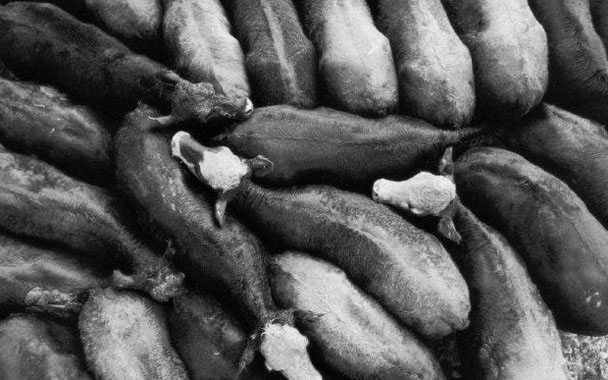
Crowded Cows
Photo Courtesy of Gourmet
Environmental regulation of the meat industry in the United Sates is largely non-existent, as government agencies have proved absent or ineffectual in addressing the harmful emissions and practices of large-scale slaughterhouses. The Environmental Protection Agency (EPA) is responsible for the regulation of factory farms, however, it does little to prevent, limit, and rectify the toxic emissions and excessive wastes of the livestock industry. Major corporations in the meat industry benefit from the weak regulatory environment, and spend massive sums of money each year on lobbying efforts. The rise of industrial, environmentally insensitive meat production has been facilitated by particular regulations, or lack thereof, and policies, thus any major changes to the livestock industry will likely start at the level of government.
The profit centric and environmentally ignorant policies sustaining large-scale, industrial animal farming affectively began with the farm bill put forth by President Franklin D. Roosevelt. Known as the Agricultural Adjustment Act (AAA) of 1933, Roosevelt’s farm bill was part of his New Deal legislation, aimed to revitalize struggling farmers during the Great Depression. The bill provided subsidies and fueled research, which encouraged, intentionally or not, the growth of industrial agriculture. While researchers and scientists studied the most effective means of raising livestock and maximizing production, farmers reshaped agriculture with the money and research provided to them. Plainly, Roosevelt’s bill restored prices, concentrated land in the hands of the few, and perpetuated the rise of agribusiness.
Continue reading →




